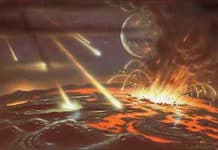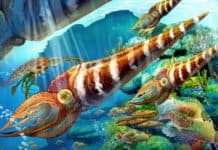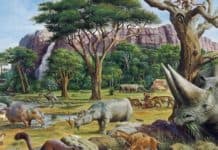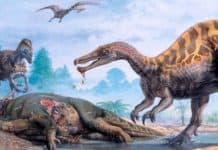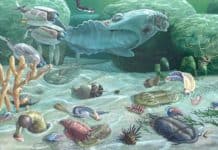The current period on Earth’s timeline is the Quaternary Period. It began approximately 2.6 million years ago and continues right up to the present time. This period is often divided into two major epochs, the Pleistocene Epoch and the Holocene Epoch. During this interval of time, very little has happened geologically – at least, as compared to previous periods. The continents have remained in their current positions, but there have been some minor geological changes which include the emergence of the Strait of Bosphorus, followed by periods of rising and retreating sea levels. It was also a time when glaciers advanced and carved out unique geological features and then retreated again. It’s in this retreating glaciation cycle that we now find ourselves.
During this time, land mammals such as mammoths, bison, oxen and rhinos began to grow large coats of thick hair. These animals perused the perimeter of the moving ice sheets and lived off any plant material they may have come across – which was most likely shrubs, bushes and an assortment of grasses. Then about 10,000 years ago, the climate warmed greatly. This not only caused the ice sheets to retreat but also caused many of the large woolly mammals to go extinct. Any of these large creatures which weren’t killed off by climate change were more than likely killed off by the emergence of mankind.
This was also a time when saber-toothed cats, horses, camels and American cheetahs became extinct in North America. As was the case with the giant Glyptodons, mammoths, and mastodons, this was partially due to a changing climate and partially due to man hunting them. Paleontologists can’t decide if over hunting was more of a factor of if climate change was more of a factor in these species demises.
This sudden emergence of mankind during the Quaternary Period has led some paleontologists to dub this period of time as the Age of Mankind. At the beginning of this period, Homoerectus emerged in Africa and after that, many hominids – each with larger brains – began to emerge as well. It’s estimated that the first modern humans evolved around 190,000 years ago in Africa and then followed food across land bridges into Europe, Australia, Asia and the Americas.
The Age of Mankind can also be called the Age of Climate Change. That’s because as man evolved and used more and more resources, they have altered the climate significantly. As time goes by, humans use more and more resources and pump more and more carbon dioxide into the atmosphere. This not only raises global temperatures but also raises sea levels as well.
